Tips For Curing and Storing Potatoes, Onions, and Garlic
Check out our useful tips on how to store these vegetables for best flavor.
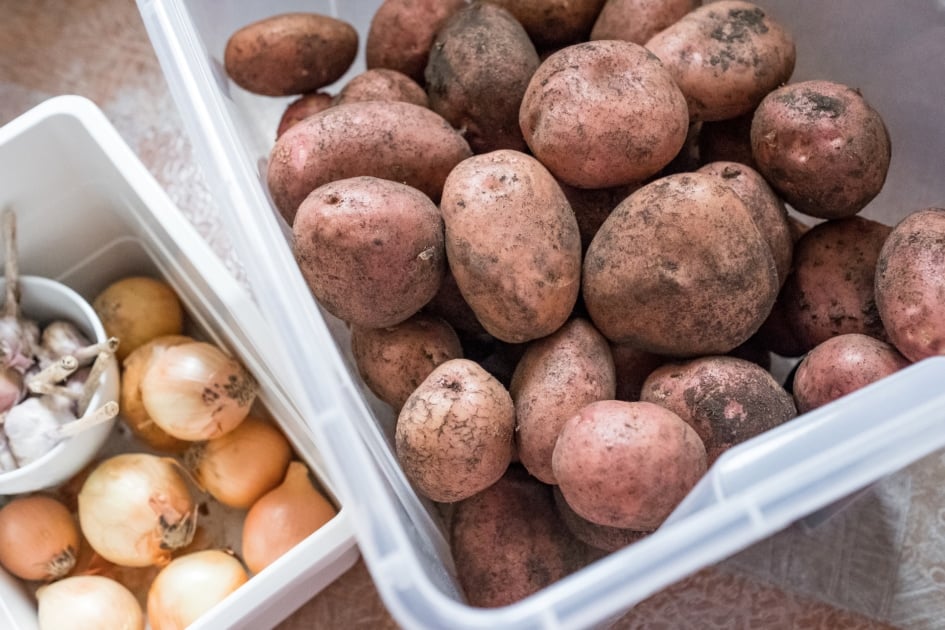
The beauty of root vegetables is that many of them will keep for a long time. This is especially true of veggies like potatoes, onions, and garlic. If you grow your own root crops and want to store the leftovers from your harvest, here are some timely tips on how to successfully do this.
Potatoes
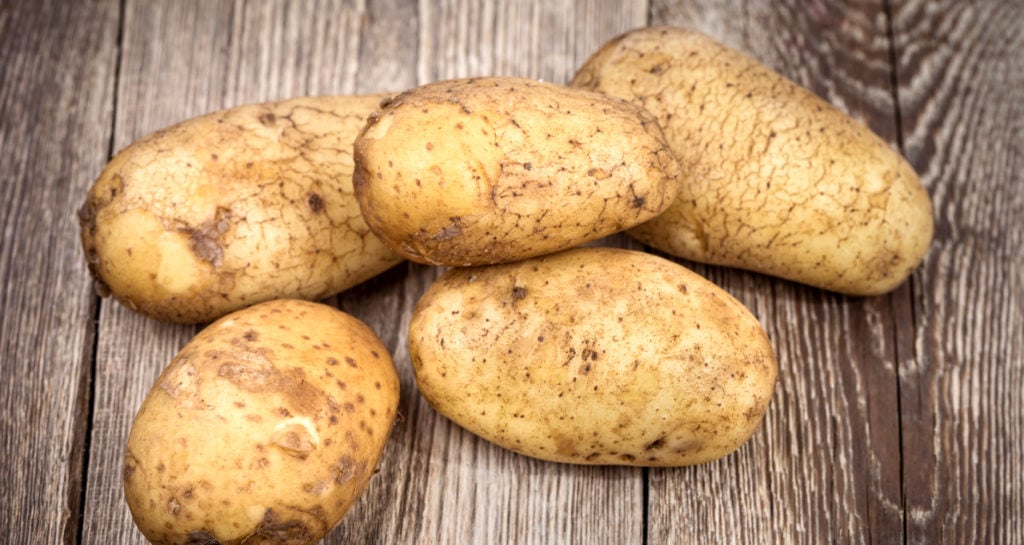
There are three things that are key to storing potatoes for the year: Curing them, storing them at the right temperature, and keeping moisture under control.
When you harvest your potatoes, the first thing you should do is to rub away any dirt. Never wash potatoes that you plan to store because this can introduce too much moisture.
To cure the potatoes, lay them out in a cool, dry, and dark place. Keep temperatures between 50 and 60 degrees, and let the potatoes rest for about two weeks. This curing process will make the skins tougher, which helps the potatoes keep longer.
For long-term storage, place the potatoes in a cool, dry, and dark area where temperatures won’t fall below freezing or rise above 60 degrees. They’ll keep best between temperatures of 35 and 40 degrees. Make sure that your storage container is well ventilated—a crate, a cardboard box with holes punched in it, or any sort of container that will allow for any excess moisture to evaporate. Keep the container covered to keep light out and your spuds won’t spout.
Onions
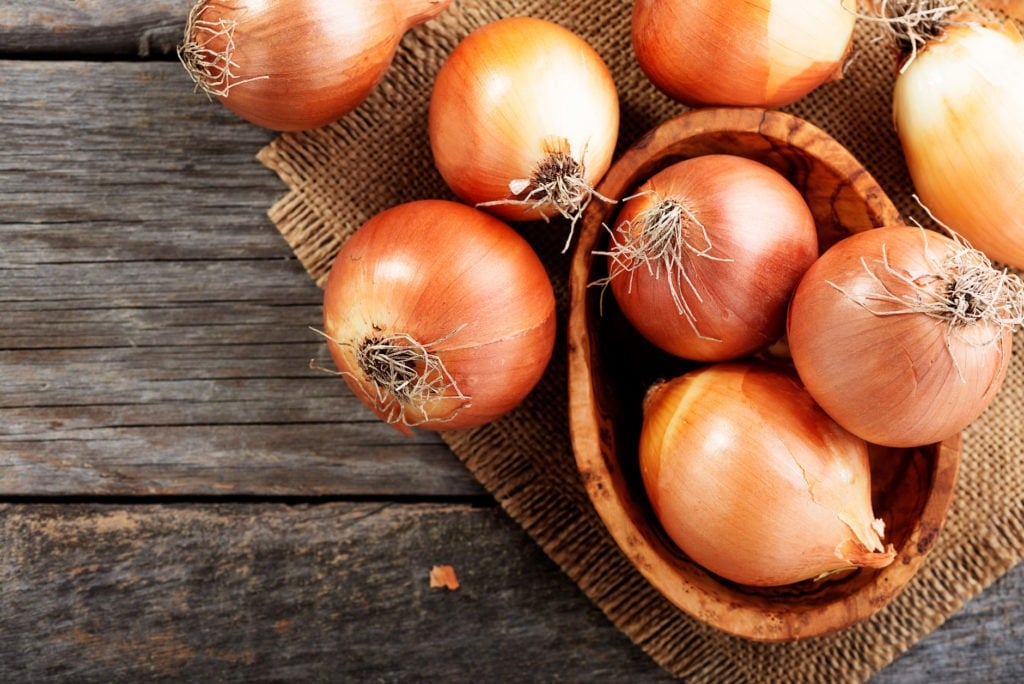
It is important to note that some onions keep better than others. If you want to keep onions over the winter, choose the varieties with a strong, hot flavor rather than sweet onions. Sweet onions tend to only keep for a few weeks.
When the onions are ready to harvest — that is, when the stalks start to fall over in late summer or fall — the first thing you’ll need to do before storage is to cure the onions. You’ll need a dry, warm spot (75 to 85 degrees) to cure them.
If the weather is supposed to be dry for the next two to four weeks, you can simply pull the onions out of the garden and lay them down right where you pulled them. If you are expecting rain, move the onions indoors, onto your porch or into the garage. Lay them out in a single layer and wait until the stalks dry out.
Once dry, you can trim the stalks back to about one inch and then store the onions in a well-ventilated container or mesh bag. As you are trimming stalks, make sure to discard any onions that still have some green in the center of the stalk — these onions won’t keep very long. As with potatoes, your onions can be stored in a cool, dark place. Ideal temperatures for long-term storage are between 35 and 40 degrees.
Garlic
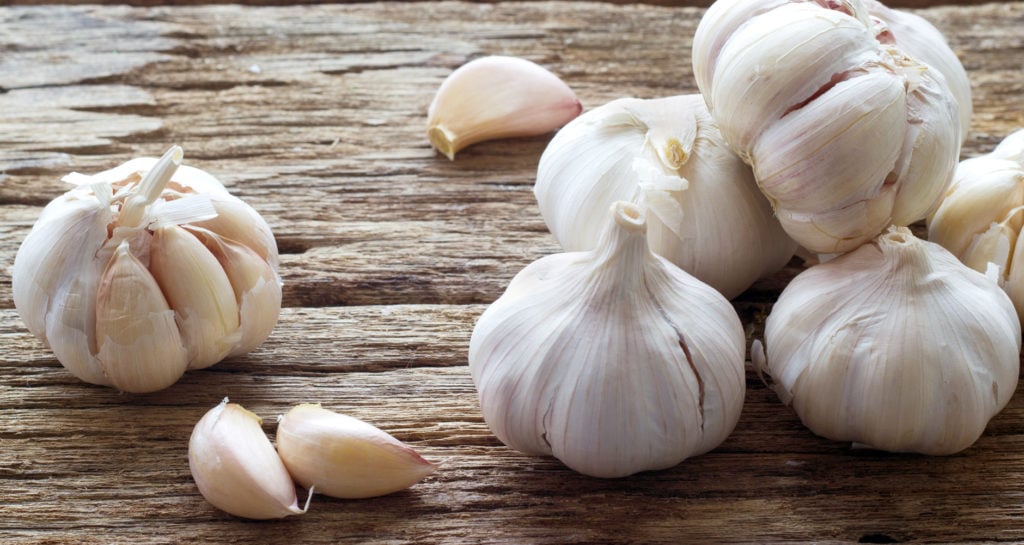
Curing and storing garlic is very similar to onions, but with a couple of extra steps. As with onions, wait until the garlic stalks fall over at the end of the growing season, then pull the bulbs and lay them out to cure. Once cured, unlike onions, you won’t need to cut off the stalks. Instead, use the stalks to braid heads of garlic together, making a long garlic rope. Once this is finished, you’ll want to choose a cool, dry place to store the garlic, just as you did with the onions.
The advantage of garlic braids is that you can hang them, so you won’t need to worry about choosing a well-ventilated container. If you are worried about your garlic braids sprouting from light exposure or collecting dust all winter long, you can use paper lunch bags to make covers for your garlic braids. Simply cut a hole in the bottom of the bag, then thread the unbraided remainder of the stalks through the hole, and your garlic will stay safe throughout the winter.
The biggest challenge to keeping your root vegetables through the winter is finding a cool place that doesn’t dip below freezing. In milder climates, you can store your crops out on the porch or in an unheated garage. Otherwise, you may need to invest in a fridge that is designed for root crops or store your root veggies in a cool cellar.

Amber Kanuckel
Amber Kanuckel is a freelance writer from rural Ohio who loves all things outdoors. She specializes in home, garden, environmental, and green living topics.




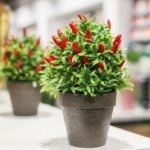




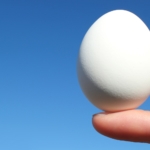


I harvested my onions and dried properly. They are getting soft and rotting. What did I do wrong?
I heard it’s best to harvest mid- August here in Saskatchewan…. let them dry in the garden for a couple weeks as long as they don’t get rained on. This gives them enough time to dry out before going into storage bags. I actually left mine in the shop for more like 4-5 weeks to dry after I brought them in from the garden. I still lost a few but not too many. Still eating garden onions in February! So I’d say it’s a success.
Fantastic, Valerie! Thanks for sharing.
I live in a small flat and have tried to grow onions and garlic as they sprouted in the kitchen basket but after soiling them they grow a while and than they seem to die how to know and what to do ?
We grow garlic (hard neck) and have stored in our basement in a basket that is hung by a string from the ceiling, by the end of winter they are sprouting and moldy. This year I stored them in mesh bags that oranges come in and hung them down in my cool basement from the ceiling. I did not crowd them in there and I am hopeful. Time will tell.
Tip from a friend in Georgia for storing onions/shallots/garlic. Old pantyhose. Place in toe of pantyhose, tie a knot, put in another one, tie a knot etc. Hang in closet/pantry. They keep forever. If you have an abundance of unwearable hose just cut below the knot for however many you need or else untie knot and save for next batch.
Those directions are for softneck garlic,hardneck is different.
Our harvest for these crops is spring in south Texas. The only place that is dark and between 35-60 degrees is a refrigerator. Any suggestions for an alternative method (other than eating the potatoes)?
Hi Speckled Sparrow, We do say, “Otherwise, you may need to invest in a fridge that is designed for root crops or store your root veggies in a cool cellar.” Might be the solution. Good luck!
I wish we had a root cellar, but most farmsteads don’t have those anymore. But yes, that would be a great place for storage!!!
There is a keeper sweet now that is named Candy Sweets. These onions have a sweet flavor and will keep. These onions are grown in the Hermiston Oregon area. I really like these onions over the Walla Walla Sweets.
We use a root cellar and have since I can remember more then 70 years , potatoes , sweet potatoes, yams, carrots, turnips, onions , garlic , all together some on a straw bed , some hanging , lasting from September to when we cut potatoes for replanting.
It’s probably best to NOT store onions and potatoes in the same storage place. Is that correct? We store in entirely two different locations and they both keep well into March and April.
Hi Gladys, yes, you do NOT want to store onions and potatoes together.